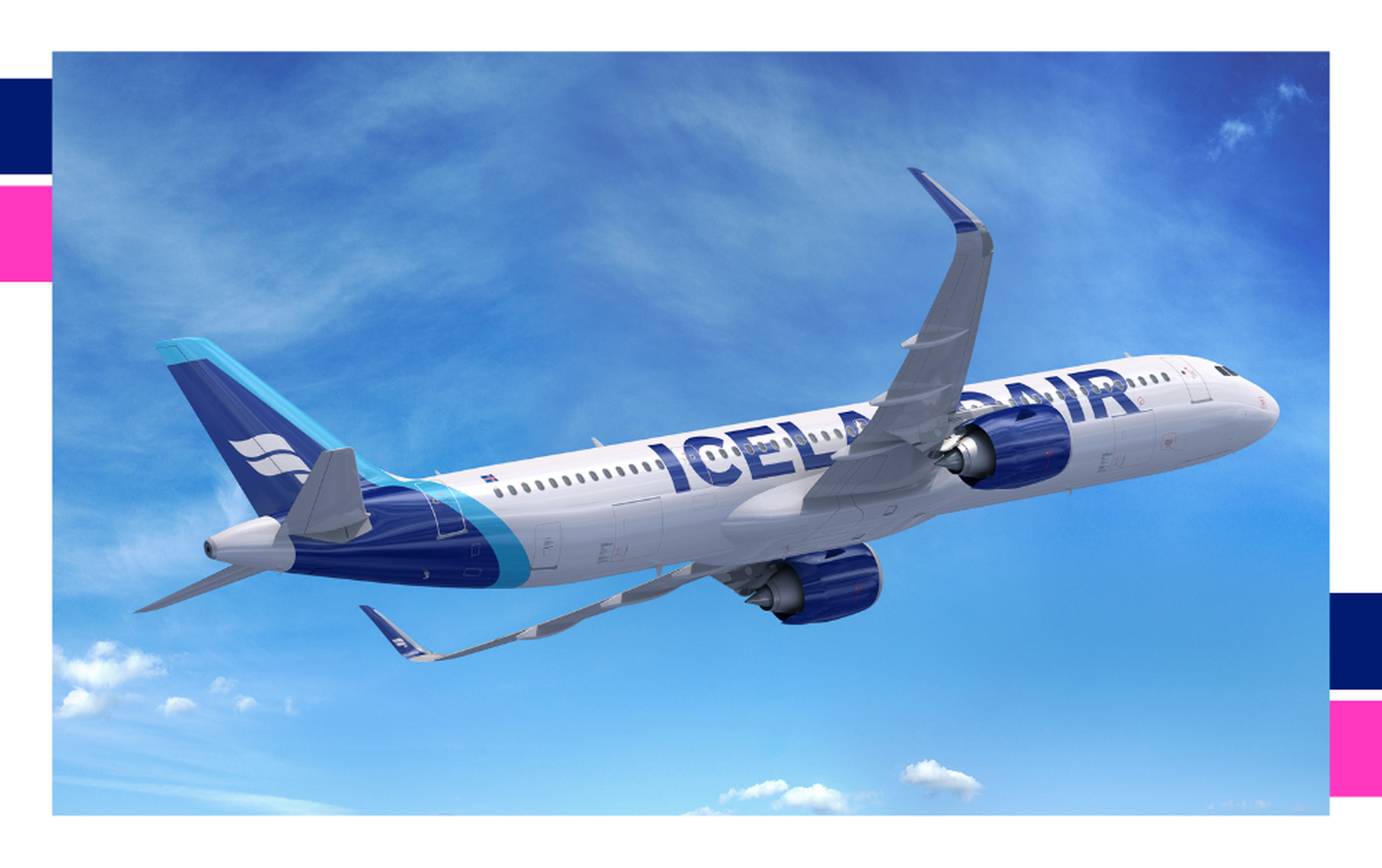Why did Icelandair pick the A321XLR?
Over the years, Icelandair proved it could walk the line of being profitable in the Transatlantic business as an independent company. It had built this reputation largely around the Boeing 757.
This seeming preference for Boeing aircraft was broken some weeks ago, as the airline announced a Memorandum of Understanding for the purchase of 13 Airbus A321XLR aircraft, with purchase rights for another twelve.
While deliveries for these would start by 2029, Icelandair said it was «in [an] advanced stage of negotiations» for leasing four A321LR — the latter to be delivered from 2025.
In a press release, the airline suggested the Airbus would be the true successor of their Boeing 757 fleet — the aircraft that made the modern Icelandair — in terms of providing a greater range.
With the «Seattle Rocket’s» range and its capacity, smaller than widebodies’, the airline could match demand in thinner routes with Keflavík’s fabulous location, less than 5,000 kilometers away from major cities in Europe and in Northeastern United States.

The replacement for most of its routes was picked in 2013, when it ordered a number of Boeing 737 MAX of the 8 and 9 variants. The first of this was delivered back in 2018.
It was clear, however, that the 737 MAX did not meet all of Icelandair’s standards — particularly in the airline’s longest segments.
Compare, for instance, the routes operated by the airline’s 757s in July 2018 (left), the last month of July without the 737 MAX, and in July 2023 (right), according to Cirium’s Diio Mi application.
Meanwhile, this is the network of Icelandair’s Boeing 737 MAX fleet in July 2023 (the three maps were generated with the Great Circle Mapper).

While the route to Anchorage has not yet returned, the 757s retained all flying to the West Cost of the United States, as well as the flight to Vancouver in Canada.
This could point to a lack of performance of the MAX in these routes. That is because, in longer routes, the proportion of fuel burn in the overall costs is higher. This, in turn, would make the MAXes all the more desirable as a replacement of the 757.
Finding an airplane that met the requirements of reaching farther cities was thus a priority for Icelandair as the Boeing 757s, the aircraft that transformed Icelandair in the hub carrier it is today, get older.
«The 757-200 is getting close to the end of its life. It will only be a few years where the A321 would be the third aircraft type and after that we’ll be in the same situation as today, but with more economical A321s instead of B757s», Icelandair’s Chief Financial Officer, Ívar S. Kristinsson, told Aviacionline by email.
«The LR and the XLR offer performance and range that is as good and even better than the 757 in the case of the XLR, which is important for the longest range missions in our network, such as on our flight to the US west coast (Seattle, Portland, Vancouver, Denver)».
With the A320 family, Icelandair will consolidate as an airline with three fleet types for the long term — ignoring the turboprops that have an important function in domestic sectors. That may appear as a high number for a fleet of about 50 aircraft, but the airline believes that the 737 MAX, the A321s and the 767-300s will each serve important (and different) purposes.
«We do see further growth opportunities in other long range markets and the A321LR/XLRs fit those missions well. We will still have the 767 in the fleet as well, serving some of our trunk routes, including routes where we have strong cargo demand», Kristinsson added.
More importantly, the airline believes, is sticking to the narrowbodies’ smaller capacities, as the last Icelandic airline to get ambitious with widebodies/long-haul aircraft — WOW — saw its results go sour after it started adding long routes with large aircraft.
«We have already shown the ability to operate these ‘stretched range’ destinations on a narrowbody, we have thus proven the concept already», said Icelandair’s CFO. «The trip cost is significantly lower on a narrowbody [versus] the B767, but with competitive seat cost which means that you can serve thinner markets than on the widebody and the risk profile of opening up a new route is much different doing it on a narrowbody rather than a widebody».
This is why Icelandair ultimately picked an Airbus — as the 737 MAX family just does not have the range that the A321LR and especially the A321XLR have. On the other hand, going towards more widebodies, even if they were Boeing, would set the airline much astray from its core model.
While Icelandair does have three Boeing 767-300, these are deployed not due to its higher range, but rather because of its larger cargo belly capacity, as well as its higher passenger capacity. It is currently serving, according to Cirium, flights connecting its hub in Keflavík to Amsterdam, Boston, Copenhagen and Paris, routes the 737 MAX could operate with ease.
«More generally, in the future we will see more O-Ds [pairs of cities, ed.] on the Transatlantic [market] being served with the most capable narrowbody aircraft, as more of those aircraft are delivered to airlines», said Kristinsson.
«Icleandair is a niche carrier and it is important for us to develop our network further into secondary markets in North America that can be uniquely served on narrowbodies from our hub in Iceland, but are unreachable from other European hubs on the same metal.»




Comentarios
Para comentar, debés estar registrado
Por favor, iniciá sesión